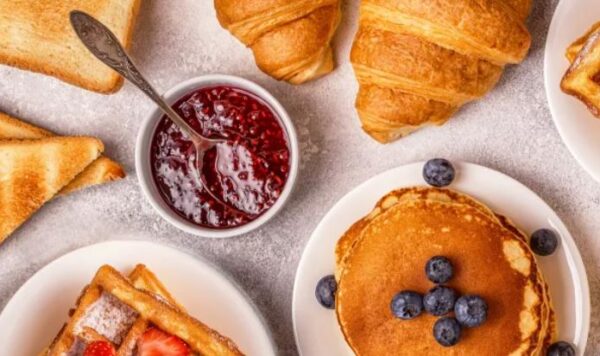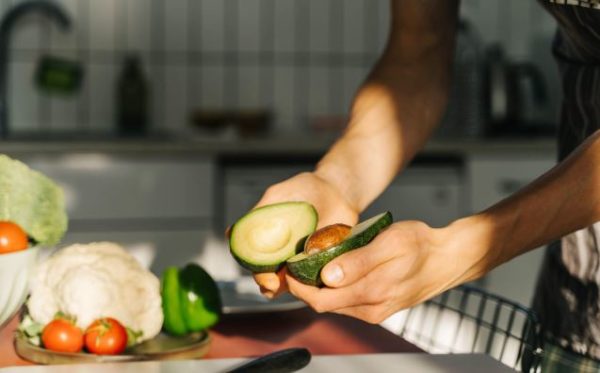Lifestyle
7 white foods to avoid if you have high BP, diabetes

1. Stop consuming white bread
White bread is made from refined flour, which is stripped of most of its fiber, vitamins, and minerals. The high glycemic index of white bread means it quickly raises blood sugar levels, making it detrimental for those with diabetes. For individuals with high blood pressure, the lack of fiber also means reduced satiety, potentially leading to overeating and weight gain, which can further exacerbate hypertension. Whole grain alternatives are a better option, providing more nutrients and better blood sugar control.
2. Eating white rice? It’s time to switch to other forms of rice
Similar to white bread, white rice undergoes a refining process that removes the bran and germ, resulting in a starchy product that spikes blood sugar levels. Regular consumption of white rice has been linked to an increased risk of developing type 2 diabetes. For those managing high blood pressure, the high glycemic load can lead to weight gain and increased blood pressure over time. Brown rice, quinoa, or barley are healthier alternatives, offering more fiber and nutrients that help stabilize blood sugar and promote heart health.
3. Pasta lover? Try healthy forms of pasta
White pasta, like other refined grains, can lead to rapid increases in blood sugar levels due to its low fiber content. This can be particularly harmful for individuals with diabetes, as it challenges blood sugar management. For those with high blood pressure, the rapid digestion of white pasta can lead to spikes in insulin, contributing to weight gain and increased blood pressure. Whole grain or legume-based pastas are better choices, as they offer more fiber and protein, aiding in blood sugar control and promoting satiety.
4. Replace white potatoes with sweet potatoes
While potatoes are a natural food, their high starch content means they can cause significant spikes in blood sugar levels when consumed in large quantities or in forms such as mashed potatoes or French fries. For individuals with diabetes, this can complicate blood sugar management. High blood pressure patients should also be cautious, as high sodium versions of potatoes (like fries and chips) can exacerbate hypertension. Sweet potatoes or other lower glycemic index vegetables are preferable alternatives.
5. Say no to refined crystal sugar
White sugar, commonly found in various processed foods and beverages, is a major contributor to elevated blood sugar levels. For those with diabetes, excessive sugar intake can lead to uncontrolled blood glucose levels and increased risk of complications. High blood pressure patients should also avoid high sugar intake, as it can lead to weight gain, insulin resistance, and increased blood pressure. Natural sweeteners like stevia or small amounts of honey can be used as alternatives, but moderation is key.
6. Instead of white flour try whole grain flour
White flour is a common ingredient in many processed foods, from baked goods to sauces. It has a high glycemic index, leading to rapid spikes in blood sugar levels, making it unsuitable for diabetics. Additionally, the lack of fiber and nutrients means it offers little in terms of satiety or nutritional benefit. For those with high blood pressure, consuming foods high in white flour can lead to weight gain and associated health issues. Opting for whole grain flours, such as whole wheat or almond flour, can provide more nutrients and better blood sugar control.
7. Make sure your food is not highly processed
Processed foods, such as white crackers, pastries, and cookies, often contain white flour, sugar, and unhealthy fats. These ingredients contribute to high calorie intake with little nutritional benefit, leading to weight gain and increased blood sugar levels. For diabetics, these foods can cause significant blood sugar spikes, making management difficult. High blood pressure patients should avoid these foods due to their potential to contribute to weight gain and increased sodium intake, which can exacerbate hypertension. Choosing whole, unprocessed foods is a healthier approach for managing both blood pressure and diabetes.
8. Switch to sea salt
Ditching white salt in favor of healthier alternatives can significantly benefit individuals with high blood pressure (BP) and diabetes. White salt, high in sodium, can exacerbate hypertension, increasing the risk of heart disease. For those with diabetes, high sodium intake can lead to fluid retention and complications. Opt for low-sodium alternatives like herbs, spices, or salt substitutes. Using Himalayan or sea salt in moderation can also help. Reducing overall salt intake supports better blood pressure management and reduces strain on the cardiovascular system, promoting overall health and well-being.










